1st The Queen's Dragoon Guards
The 1st The Queen's Dragoon Guards (QDG) is a cavalry regiment of the British Army. Nicknamed The Welsh Cavalry, the regiment recruits from Wales and the bordering English counties of Cheshire, Herefordshire, and Shropshire, and is the senior cavalry regiment, and therefore senior regiment of the line of the British Army. The regiment is part of the Royal Armoured Corps and is paired with the Royal Yeomanry.
| 1st The Queen's Dragoon Guards | |
|---|---|
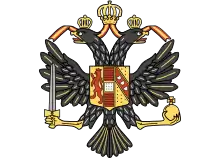 Cap badge of 1st The Queen's Dragoon Guards | |
| Active | 1 January 1959 – present |
| Allegiance | |
| Branch | |
| Type | Line cavalry |
| Role | Light cavalry |
| Size | Regiment 403 personnel[1] |
| Part of | 7th Infantry Brigade[2] |
| Garrison/HQ | RHQ – Cardiff Regiment – Swanton Morley |
| Nickname(s) | The Welsh Cavalry |
| Motto(s) | Pro rege et patria (For King and Country) (Latin) |
| March | Quick – The Radetzky March and Rusty Buckles Slow – 1st Dragoon Guards and 2nd Dragoon Guards Slow March |
| Mascot(s) | Welsh pony (Emrys Forlan Jones)[3] |
| Engagements | Combined battle honours of 1st King's Dragoon Guards, and 2nd Dragoon Guards (Queen's Bays) Wadi al Batin 1991 |
| Commanders | |
| Current commander | Lieutenant Colonel H T Lloyd |
| Colonel-in-Chief | The Prince of Wales KG KT GCB |
| Colonel of the Regiment | Brigadier A Richmond OBE |
| Insignia | |
| Tactical recognition flash |  |
| Arm badge | Royal Cypher of Queen Caroline From the Queen's Bays (2nd Dragoon Guards) |
| Abbreviation | QDG |
History

The current regiment was formed in 1959 by the amalgamation of 1st King's Dragoon Guards (raised in 1685 by Sir John Lanier as Lanier's or the 2nd Queen's Regiment of Horse in response to the Monmouth Rebellion) and the 2nd Dragoon Guards (Queen's Bays) (raised in 1685 by the Earl of Peterborough as Peterborough's or the 3rd Regiment of Horse, also in response to the Monmouth Rebellion).[4]
The regiment has spent much of its history based in Germany. It served during the Aden Emergency in 1966 and 1967 and its squadrons were dispersed throughout the Middle East during that time.[4] Perhaps the best known member in the 1970s was Captain Mark Phillips, one-time husband of The Princess Anne: they married in 1973.[5]
In 1983, the regiment was deployed to Lebanon in support of the allied Multinational Force, in 1990 it was sent to the Middle East for the Gulf War and in 1996 it was deployed to Bosnia as part of NATO peacekeeping forces during the Yugoslav Wars.[4]
In 2003, the regiment served in Iraq during the invasion of Iraq providing the reconnaissance and light armour support necessary to allow 3 Commando Brigade's advance north to Basra.[6] On their return from Iraq in 2005, Brigadier Rose of 3 Commando Brigade presented the Regiment with the Commando Dagger in recognition of the superb relationship between 'C' Squadron and the Royal Marines during the liberation of Iraq. It is of note that this squadron had the distinction of spending one of the longest periods of constant contact with the enemy for 20 days or so during this operation. In 2006, the QDG deployed again to Iraq on Op TELIC 8 and oversaw the successful transfer of Al Muthanna province back to Iraqi control.[7]
At the end of 2007, the Regiment left Osnabrück and moved to Dempsey Barracks, Sennelager where they trained for a six-month deployment to Afghanistan as part of 3 Commando Brigade. Here they carried out a variety of frontline tasks across Helmand province. QDG were the first Formation Reconnaissance Regiment to deploy to Helmand as the Intelligence, Surveillance and Target Acquisition Group (ISTAR Gp) on Operation HERRICK 15 in 2011. The ISTAR Gp consisted of HQ Squadron, 'C' Squadron, 'D' Squadron QRH, an Intelligence Company, K Battery 5 Regt RA and 11 UAV Battery with 'B' Squadron initially detached to the Danish Battlegroup but joining the remainder of the Regiment towards the end of the tour.[7]
The regiment celebrated its fiftieth anniversary on 31 July 2009 with a ceremony at Cardiff castle and a parade through the streets of Cardiff city, both attended by the Colonel-in-Chief The Prince of Wales. The regiment received a great response from the people of Cardiff. That same year, the unit was also awarded with the Freedom of the City of Swansea.[8]
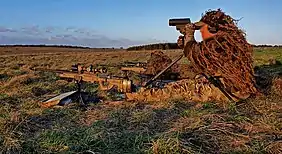
In 2012, the regiment were called in to provide security for the 2012 London Olympics with composite squadrons focused on supporting the beach volleyball and securing the athletes village.[9] In May of that year, there was speculation that the unit would become a victim of the defence budget cuts. As it was one of only three regiments historically associated with and one that still largely recruits from Wales, there was much support from the Welsh public to keep the QDG. However, Ministry of Defence officials announced no such plan has been made.[10][11]
As part of the Army 2020 plans, most units based in Germany returned to the UK and the QDG moved to Robertson Barracks, Swanton Morley, Norfolk in June 2015.[12] They have re-roled as "light cavalry", using Jackal vehicles.[13]
In 2014, the Regiment deployed on the final British combat deployment to Helmand Province on Operation HERRICK 20. The principal focus was the protection and handover of Camp Bastion,'C' Squadron formed the Brigade Reconnaissance Force[14] and the remainder of the Regiment worked with the Afghan Army to develop the latter's capabilities and professionalism.[7]
In 2018, the QDG conducted two tours of Poland on Operation Cabrit providing the role for NATO as the enhanced forward presence in order to protect and reassure NATO's Central and Northern European member states on NATO's eastern flank of their security.[15]
Operational role
_MOD_45152545.jpg.webp)
The regiment operates in a light cavalry role and is now equipped with Jackal 2 armoured fighting vehicles.[16]
Regimental museum
The regimental collection is displayed at Firing Line: Cardiff Castle Museum of the Welsh Soldier in Cardiff.[17]
Uniform, cap badge and march

In 1896, Emperor Franz Joseph I of Austria was appointed Colonel-in-Chief of the 1st King's Dragoon Guards and allowed the regiment to wear the Austrian imperial coat of arms, which is still used as the regiment's cap badge today; the collar badge is that of The Queen's Bays. Also the regiment adopted an Austrian military march, Radetzky March, as quick march. The current Regimental March is the Radetzky March and Rusty Buckles, the latter being the Regimental March of The Queen's Bays. Other items of uniform draw on the regiment's dual heritage: thus, whilst the cap of 1st King's Dragoon Guards (with dark blue velvet strip and piping) is worn, trousers have the distinctive broad white stripe of The Queen's Bays.[18]
Full dress is still worn by some on ceremonial occasions:[19] the 1st King's Dragoon Guards tunic (scarlet with blue velvet facings) being paired with Queen's Bays white-striped overalls. The KDG red-plumed brass cavalry helmet is also worn, together with pouch belts and other accoutrements.[20]
In the QDG lance corporals wear two chevrons, corporals wear two chevrons surmounted by a rank badge consisting of the Bay’s emblem, which is worn by all senior NCOs. Squadron quartermaster sergeants wear four chevrons with rank badge, the whole surmounted by a crown.[20]
Battle honours
- Combined battle honours of 1st King's Dragoon Guards, and 2nd Dragoon Guards (Queen's Bays), plus:
- Wadi al Batin, Gulf 1991[21]
Commanding Officers
The Commanding Officers have been:[22]
- 1960–1962: Lt.-Col. Jack W. Harman
- 1962–1964: Lt.-Col. Peter R. Body
- 1964–1967: Lt.-Col. Thomas W. Muir
- 1967–1969: Lt.-Col. George N. Powell
- 1969–1971: Lt.-Col. John H. Lidsey
- 1971–1973: Lt.-Col. Maurice R. Johnston
- 1973–1975: Lt.-Col. Robin C. Middleton
- 1975–1977: Lt.-Col. Robert W. Ward
- 1977–1980: Lt.-Col. John I. Pocock
- 1980–1982: Lt.-Col. Charles H. Bond
- 1982–1985: Lt.-Col. J. Gordon G. de P. Ferguson
- 1985–1987: Lt.-Col. Eric J. K. O’Brien
- 1987–1990: Lt.-Col. Michael G. Boissard
- 1990–1992: Lt.-Col. Christopher D. Mackenzie-Beevor
- 1992–1994: Lt.-Col. Mark R. M. Eliot
- 1994–1997: Lt.-Col. Hamish L. A. Macdonald
- 1997–1999: Lt.-Col. Simon V. Mayall
- 1999–2001: Lt.-Col. Patrick J. Andrews
- 2001–2003: Lt.-Col. Gilbert T. Baldwin
- 2003–2005: Lt.-Col. Timothy R. Wilson
- 2005–2007: Lt.-Col. Anthony J. Pittman
- 2007–2010: Lt.-Col. Alan S. Richmond
- 2010–2012: Lt.-Col. Jasper J. De Quincey Adams
- 2012–2015: Lt.-Col. William H. L. Davies
- 2015–2017: Lt.-Col. Daniel B. Duff
- 2017–2019: Lt.-Col. Justin G. E. Stenhouse
- 2019–Present: Lt.-Col. Hugo T. Lloyd
Colonels-in-chief
Colonels-in-chief were as follows:[23]
Regimental colonels
Regimental colonels were as follows:[23]
- 1959–1961: Brig. John Gerard Edward Tiarks
- 1961–1964: Col. George William Charles Draffen DSO
- 1964–1968: Col. Kenneth Edward Savill DSO DL
- 1968–1975: Brig. Anthony William Allen Llewellyn-Palmer DSO
- 1975–1980: Gen. Sir Jack Wentworth Harman GCB OBE MC ADCGen
- 1980–1986: Maj. Gen. Desmond Hind Garrett Rice CVO CBE
- 1986–1991: Lt Gen. Sir Maurice Robert Johnston KCB OBE
- 1991–1997: Maj. Gen. Robert William Ward CB MBE
- 1997–2002: Col. John Ievers Pocock MBE
- 2002–2007: Col. Christopher David MacKenzie-Beevor CBE
- 2007–2019: Lt Gen. Sir Simon Mayall KBE CB
- 2019–present: Brig. Alan Richmond OBE
Alliances
Commonwealth
.svg.png.webp) Canada – The Governor General's Horse Guards
Canada – The Governor General's Horse Guards.svg.png.webp) Australia – 1st/15th Royal New South Wales Lancers
Australia – 1st/15th Royal New South Wales Lancers South Africa – 1 Special Service Battalion
South Africa – 1 Special Service Battalion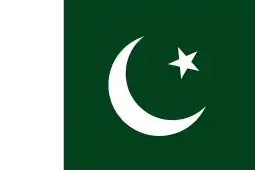 Pakistan – 11th Cavalry (Frontier Force)
Pakistan – 11th Cavalry (Frontier Force)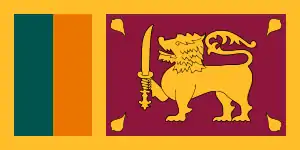 Sri Lanka – 1st Reconnaissance Regiment
Sri Lanka – 1st Reconnaissance Regiment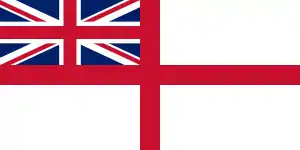 Royal Navy – HMS Monmouth
Royal Navy – HMS Monmouth
Non-Commonwealth
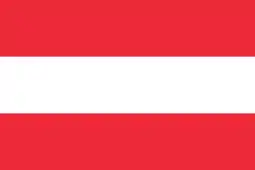 Austria – Panzergrenadierbataillon 35
Austria – Panzergrenadierbataillon 35 France – 1er Régiment Étranger de Cavalerie
France – 1er Régiment Étranger de Cavalerie
Order of precedence
| Preceded by The Blues and Royals (Royal Horse Guards and 1st Dragoons) |
Cavalry Order of Precedence | Succeeded by The Royal Scots Dragoon Guards (Carabiniers and Greys) |
References
- "Army – Question for Ministry of Defence". p. 1. Retrieved 14 December 2020.
- "7th Infantry Brigade and HQ East". www.army.mod.uk.
- "Welsh Cavalry adopt mountain pony as new mascot". BBC News. 19 July 2016. Retrieved 8 May 2019.
- "The History of 1st The Queen's Dragoon Guards" (PDF). Ministry of Defence. Archived from the original (PDF) on 23 September 2015. Retrieved 3 May 2014.
- "Iconic weddings: Princess Anne and Mark Phillips". 27 July 2011. Retrieved 3 May 2014.
- "Welsh Cavalry pushes in to Iraq". BBC News. 21 March 2003.
- "2003 onwards – Operation TELIC 1, 5, 8 (Iraq) and Operation HERRICK 9, 15 & 20 (Afghanistan) to the present day". Retrieved 18 August 2020.
- "1st Queen's Dragoon Guards". Swansea City Council. July 2009. Archived from the original on 3 May 2014. Retrieved 3 May 2014.
- "London 2012: Welsh Cavalry and 1 Rifles soldiers on standby". BBC News. 13 July 2012. Retrieved 18 August 2020.
- "1st The Queen's Dragoon Guards: Ray Scanlon in 'save regiment' call". BBC News. 30 May 2012.
- "Fears for future of 1st The Queen's Dragoon Guards – The Welsh Cavalry". BBC News. 16 May 2012. Retrieved 3 May 2014.
- "Regular Army Basing Plan – 5 Mar 2013" (PDF). Ministry of Defence.
- "The Welsh Cavalry swap Scimitars for jungle boots". Ministry of Defence. 7 March 2013. Retrieved 3 May 2014.
- "Brigade Reconnaissance Force 01.04.11". 4 April 2011.
- "Queen's Dragoon Guards spearhead battlefield exercise in Poland". UK Defence Journal. 20 June 2018.
- "1st The Queen's Dragoon Guards". Ministry of Defence. Archived from the original on 7 February 2015. Retrieved 3 May 2014.
- "Museum of The Queen's Dragoon Guards and The Royal Welsh". Retrieved 3 May 2014.
- "Queen's Bays". British Empire. Retrieved 19 June 2019.
- "PICTURES: On parade in Hereford". www.bbc.co.uk.
- "Uniform 1843 Onwards". Queen's Dragoon Guards. Retrieved 19 January 2021.
- "Gulf Battle Honours". Parliamentary Debates (Hansard). House of Commons. 19 October 1993. Retrieved 3 May 2014.
- "Regiments and Commanding Officers, 1960 - Colin Mackie" (PDF). p. 15. Retrieved 3 November 2020.
- "1st The Queen's Dragoon Guards". regiments.org. Archived from the original on 8 February 2006. Retrieved 26 September 2016.